SOLUTION 1: a.) Here are sketches of the base of the solid and the entire solid.
 $ \ \ \ $
$ \ \ \ $
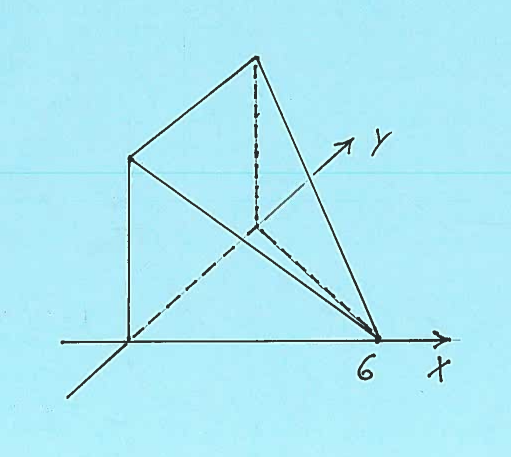
Here are sketches of a square cross-section at $x$, together with it's dimensions.
 $ \ \ \ $
$ \ \ \ $
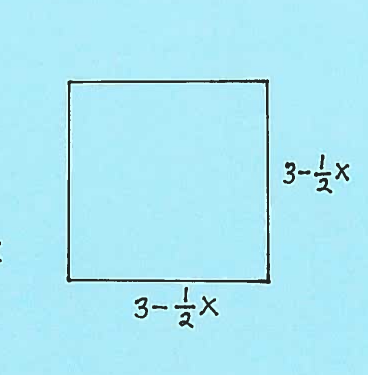
The area of the square cross-section is $ A(x)= (edge)^2 = (3- { 1 \over 2 }x)^2 $. Thus the total volume of this static solid is
$$ Volume = \int_{0}^{6} (3- { 1 \over 2 }x)^2 \ dx $$
SOLUTION 1: b.) Here are sketches of the base of the solid and the entire solid.
 $ \ \ \ $
$ \ \ \ $
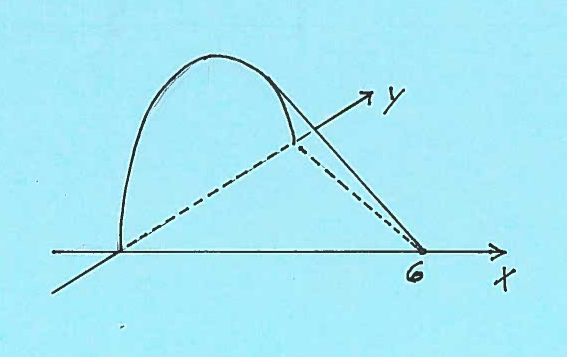
Here are sketches of a semi-circular cross-section at $x$, together with its radius.
 $ \ \ \ $
$ \ \ \ $
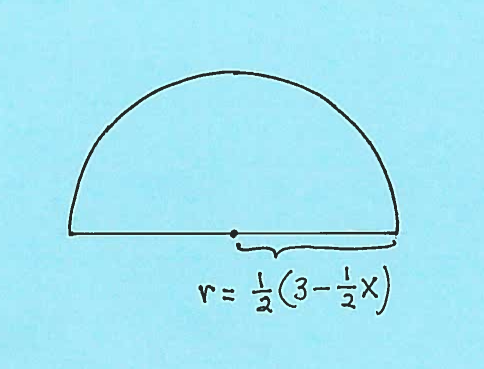
The area of the semi-circular cross-section is $ A(x)= { 1 \over 2 } \pi r^2 = { 1 \over 2 } \pi ({ 1 \over 2 }(3 - { 1 \over 2 }x))^2 $. Thus the total volume of this static solid is
$$ Volume = \int_{0}^{6} { 1 \over 2 } \pi \Big({ 1 \over 2 }\Big(3 - { 1 \over 2 }x\Big)\Big)^2 \ dx $$
SOLUTION 1: c.) Here are sketches of the base of the solid and the entire solid.
 $ \ \ \ $
$ \ \ \ $
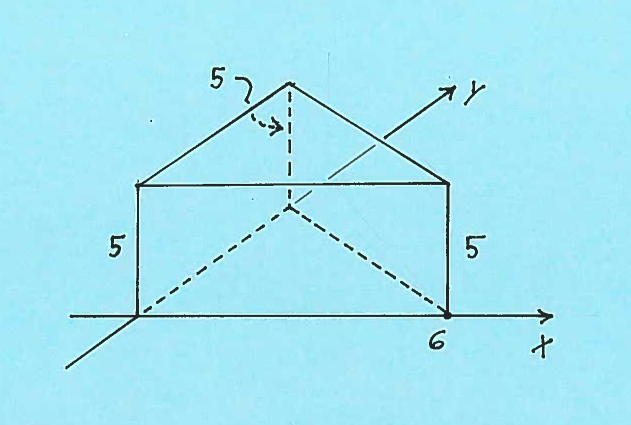
Here are sketches of a rectangular cross-section at $x$, together with its dimensions.
 $ \ \ \ $
$ \ \ \ $
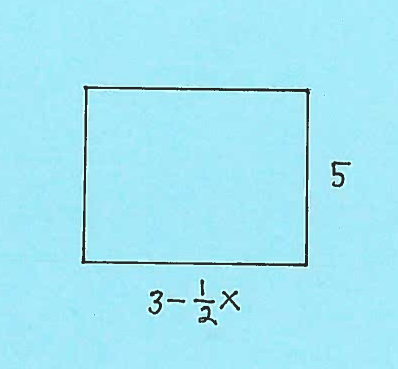
The area of the rectangular cross-section is $ A(x)= (height)(base) = (5)(3 - { 1 \over 2 }x) $. Thus the total volume of this static solid is
$$ Volume = \int_{0}^{6} 5\Big(3 - { 1 \over 2 }x\Big) \ dx $$
Click HERE to return to the list of problems.
 $ \ \ \ $
$ \ \ \ $

 $ \ \ \ $
$ \ \ \ $

 $ \ \ \ $
$ \ \ \ $

 $ \ \ \ $
$ \ \ \ $

 $ \ \ \ $
$ \ \ \ $

 $ \ \ \ $
$ \ \ \ $

 $ \ \ \ $
$ \ \ \ $
